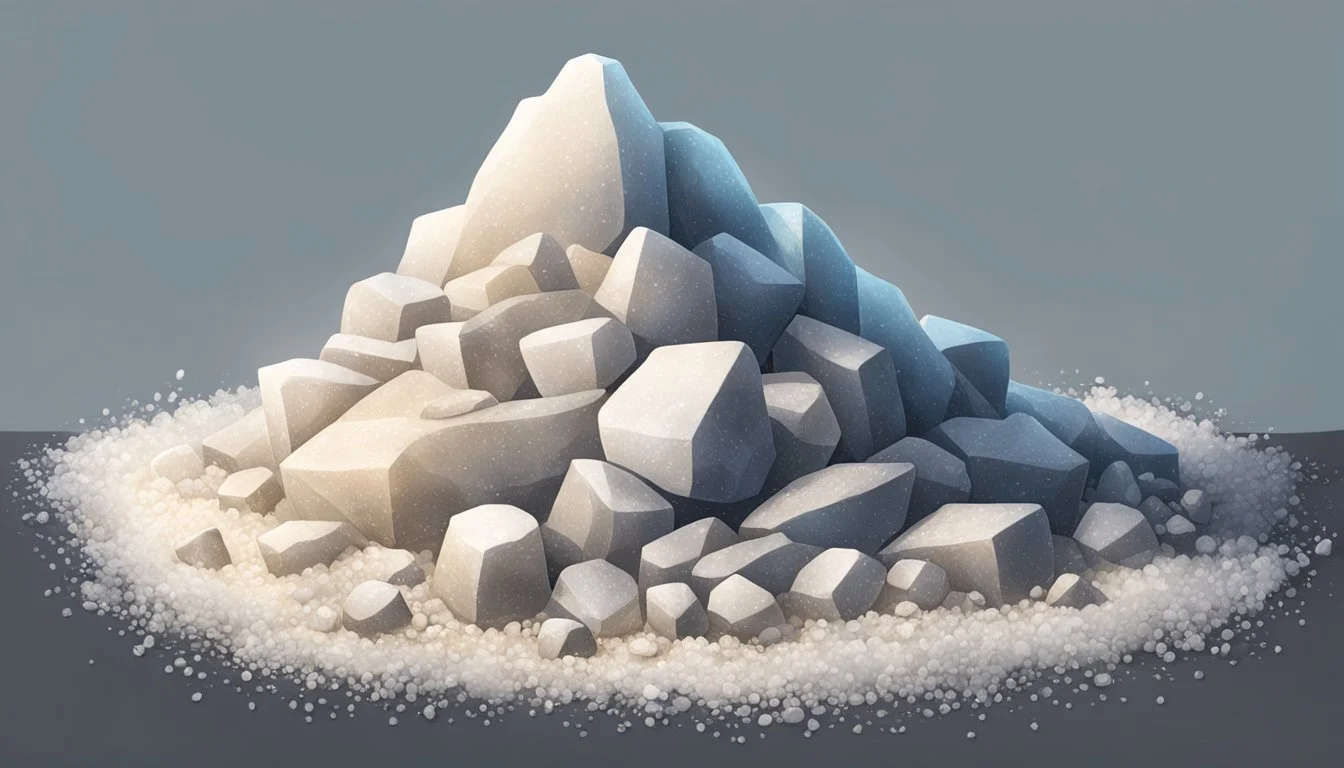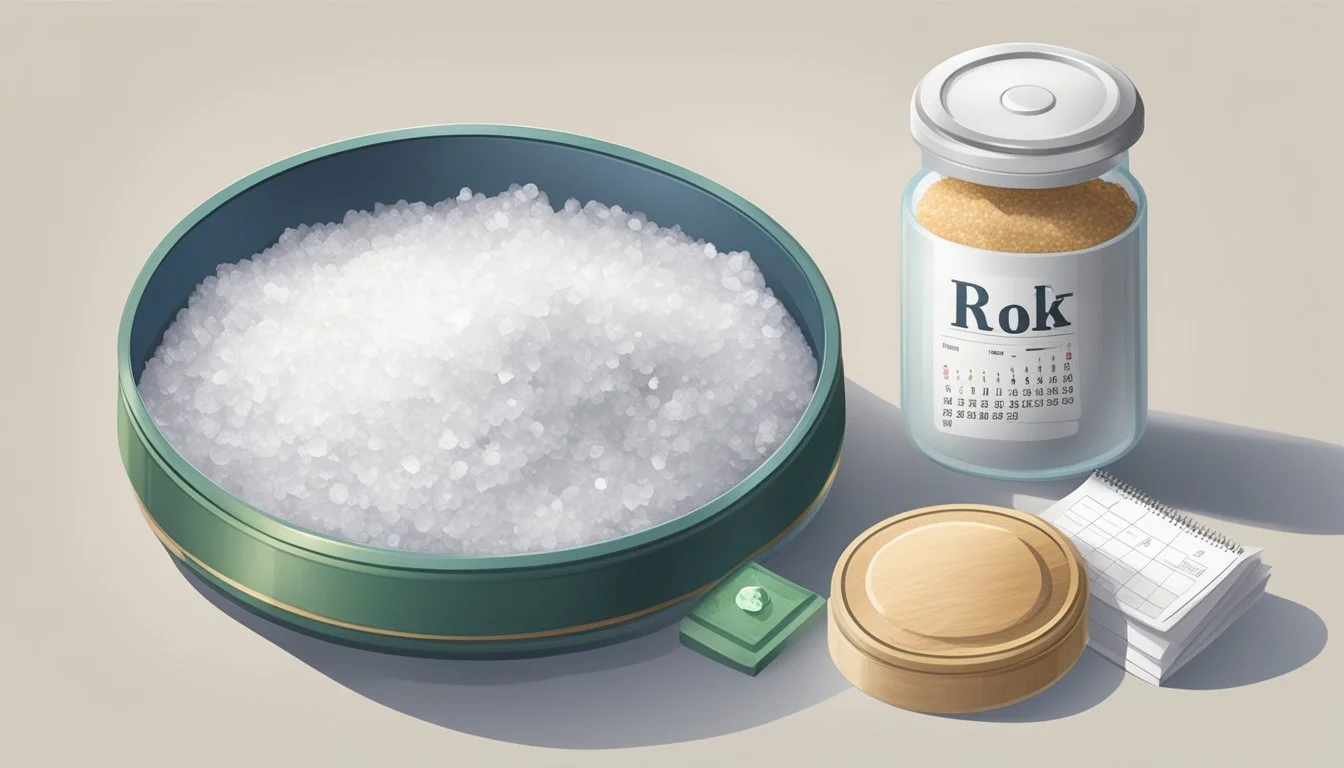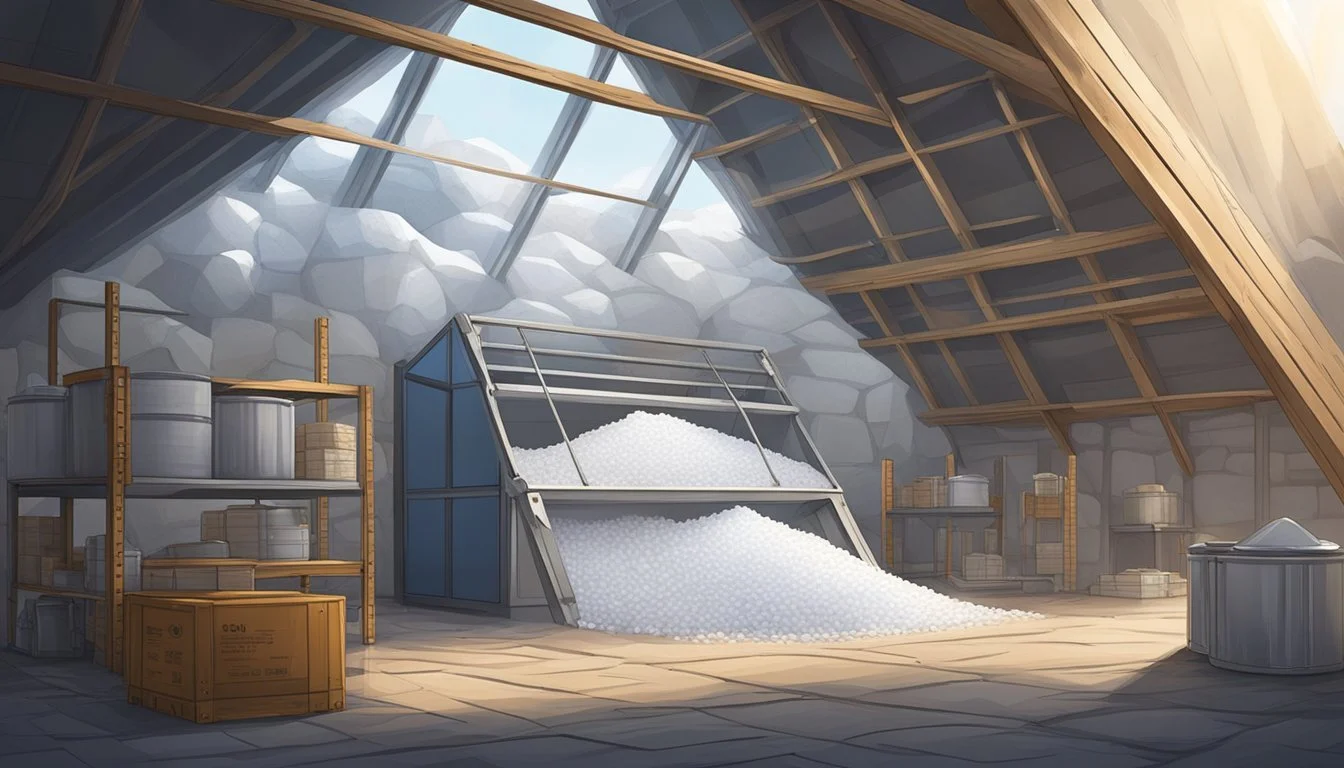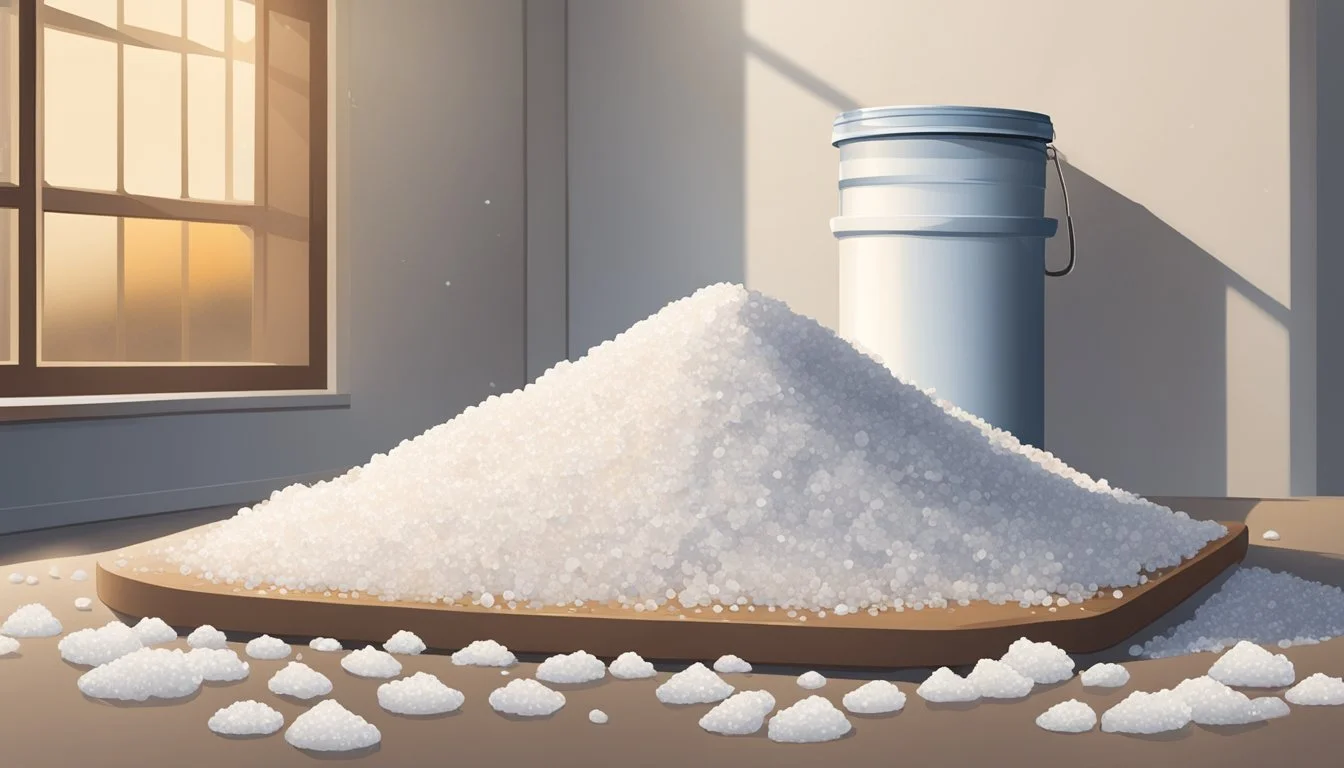How Long Does Rock Salt Last?
Understanding Its Shelf Life and Storage Conditions
Rock salt, a common de-icing agent and seasoning resource, exhibits remarkable longevity. It is a naturally occurring mineral known as halite and, like other forms of salt, has a virtually indefinite shelf life when stored under proper conditions. The durability of rock salt arises from its inherent chemical stability—sodium chloride does not break down or decompose under normal storage conditions, which means it does not spoil or lose effectiveness over time.
The concept of shelf life is often associated with perishable goods, but for non-perishable essentials such as rock salt, "shelf life" refers more to potency and quality rather than safety or edibility after a certain period. For rock salt to maintain its granular nature and efficacy, particularly for those using it to manage ice or for culinary purposes, the key is to keep it in a cool, dry environment. Exposure to moisture is the primary adversary of rock salt’s storage integrity, as it can cause it to clump or, if exposed to significant water, dissolve.
Chemical Composition of Rock Salt
Rock salt primarily consists of sodium chloride with trace amounts of other minerals, which can influence its color and properties. This composition is critical for understanding both the longevity and application of rock salt.
Sodium Chloride and Other Minerals
Rock salt is largely composed of sodium chloride (NaCl), which consists of sodium and chloride ions bound in a crystalline structure. The purity of rock salt is indicated by its color, with colorless forms being the purest due to fewer impurities. However, rock salt commonly contains trace amounts of other minerals such as calcium, magnesium, and potassium, which can impart various hues, such as blue, pink, or yellow. For example, Himalayan salt, often pink in color, has these trace minerals to thank for its distinctive appearance.
Iodized and Non-Iodized Varieties
While most rock salt is non-iodized, there are iodized varieties available. Iodine is added to salt to prevent iodine deficiency in humans. It is important to differentiate between the two, as the addition of iodine doesn't significantly alter the chemical composition, but it does change its dietary impact. Non-iodized rock salt, like that typically found in natural deposits, is used for various purposes including de-icing and seasoning in its coarse form, whereas iodized salt (how long does iodized salt last?) is more commonly found on the dinner table. Sea salt (how long does sea salt last?), which is harvested from evaporated seawater, may also come in both iodized and non-iodized forms, providing options for different uses based on consumer needs.
Determining Salt Shelf Life
When considering rock salt's shelf life, it is imperative to differentiate between pure salt and salt that contains additives. Pure rock salt typically remains stable indefinitely, while additives can impact the quality over time.
Expiration Date and Quality Indicators
Pure rock salt does not have a true expiration date due to its natural mineral composition, which is chemically stable and non-perishable. Quality indicators for rock salt include its dryness and free-flowing nature. Products that contain anti-caking agents or impurities might have a stated expiration date to ensure optimal quality, although they generally last for years if stored properly.
Signs of Deterioration in Salt
Salt can experience a decrease in quality, even if it does not truly expire. Clumping can occur, especially if the salt absorbs moisture because of improper storage or exposure to humidity. This is often not a sign of spoilage but rather a signal that the salt has encountered moisture. However, the presence of added iodine or other flavor enhancers can lead to the deterioration of those specific qualities within the salt, although the salt itself remains safe for consumption. It's crucial to observe changes and assess whether they pertain to added ingredients or the salt itself.
Storage Recommendations for Longevity
Proper storage is essential for maintaining the quality and effectiveness of rock salt over time. These measures ensure that rock salt remains potent and ready for use.
Airtight Containers Vs. Open Storage
Airtight Containers: Storing rock salt in airtight containers is the best way to protect it from moisture. Moisture can lead to clumping and may reduce its efficacy for various purposes including de-icing or culinary use. They should ensure these containers are sealed properly and kept in a dry place.
Open Storage: While not ideal, open storage is possible for rock salt due to its inherent longevity. However, it is important to note that when stored openly, rock salt is more vulnerable to clumping from humidity and other environmental factors.
Ideal Storage Conditions and Temperature
Pantry: A pantry often provides the optimal conditions for storing rock salt. It is usually a dry place with a relatively stable temperature, away from the extreme heat or cold that can affect rock salt's structural integrity.
Temperature Considerations: The ideal temperature for storage should be stable and cool, avoiding fluctuations that could introduce moisture into the rock salt. Sudden temperature changes can cause condensation, even in sealed containers.
Impact of Environmental Factors
Rock salt's longevity can be significantly affected by environmental exposures, especially to moisture and temperature fluctuations.
Moisture and Humidity Effects
Moisture and high humidity are detrimental to the preservation of rock salt. Rock salt is hygroscopic, meaning it naturally attracts moisture from its environment, which can lead to the salt clumping and eventually dissolving:
Moisture Exposure: When rock salt comes into contact with moisture, it starts to dissolve, reducing the total volume and effectiveness of the salt.
Humidity Impact: In areas with high humidity, rock salt can absorb moisture from the air. A high level of airborne moisture can decrease the salt's shelf life and potency.
To prevent degradation, storing rock salt in a cool and dry place is imperative.
Temperature Changes and Salt's Preservation
Temperature variations impact rock salt's longevity differently:
Cool Environments: Rock salt tends to stay stable and effective in cooler temperatures. A stable, cool environment helps maintain its granular structure and deicing properties.
Warm Environments: Warmer temperatures can lead to increased rates of moisture absorption from the air, especially if the storage area is not airtight.
Temperature control in storage is essential to preserve the rock salt's structural integrity and deicing capabilities over time.
Health and Safety Considerations
When considering rock salt, one should be cognizant of both its efficacy and its potential health and safety implications. There are significant considerations for safe consumption and the responsible use of rock salt as a de-icing agent.
Safe Consumption and Overexposure
Rock salt, while chemically similar to table salt (sodium chloride), is not processed for human consumption and may contain impurities. Ingesting rock salt in any significant amount can lead to sodium toxicity, which can cause symptoms like thirst, confusion, and swelling in the body. Safe consumption practices dictate that rock salt should never be used in cooking or food preparation, as it is not food grade.
Rock Salt as a De-icing Agent
As a de-icing agent, rock salt is highly effective at lowering the freezing point of water, which helps to melt ice on sidewalks and driveways. However, it can pose several health risks:
Skin and Eye Irritation: Direct contact with skin or eyes can cause irritation.
Pet Safety: Animals may ingest rock salt by licking their paws, which can lead to illness.
Environmental Concerns: Overuse can lead to increased sodium levels in nearby soil and water, potentially harming plant and aquatic life.
There should be a balanced approach to using rock salt for de-icing, considering both its effectiveness and the potential risks to health and safety. Protective measures, such as gloves and goggles, are recommended when handling rock salt to avoid direct skin or eye contact. Additionally, alternatives to rock salt, like sand or non-toxic ice melts, can be considered, especially in areas frequented by pets or vulnerable plant life.
Salt's Role in Food Preservation
Salt is indispensable in food preservation, extending shelf life and inhibiting pathogen growth. This mineral not only ensures safety but also enhances flavor.
How Salt Preserves Different Foods
Salt has been a cornerstone of food preservation for centuries due to its ability to control moisture and inhibit the growth of microorganisms. It works through the following mechanisms:
Dehydration: Salt draws water out of cells via osmosis, reducing the water activity within food. This dehydration makes it harder for bacteria and fungi to thrive.
Creating an inhospitable environment: High salt concentrations can disrupt the structure and metabolic processes of microbial cells, preventing spoilage.
In practice, the level of salt concentration required for effective preservation varies by food type. For instance:
Meat: Large quantities are often needed for meats. Salt cures meat by penetrating deep into the tissue, facilitating water loss and creating an environment unsuitable for microbial life.
Fish: Similar to meat, fish is often preserved using a combination of salt and drying or smoking.
Using Salt in Cooking and Seasoning
Beyond its preservative qualities, salt is also pivotal in cooking and seasoning:
Flavor enhancement: Salt is known to enhance the natural flavors of food, making it a fundamental seasoning in culinary practices.
Texture modifier: In foods like bread and cheese, salt contributes to the development of texture and structure.
Utilizing salt in cooking does more than just season food. It also can impact nutrition by interacting with other ingredients, such as spices, and aid in their preservation. This multi-functional role makes salt a unique and valuable ingredient in both food preservation and culinary arts.
Common Queries About Rock Salt
When considering the durability and storage of rock salt, it's important to address two key concerns that consumers often have: its expiration and the feasibility of storing it with other foods.
Does Rock Salt Expire?
Rock salt, consisting mainly of the mineral halite, fundamentally does not expire if kept under proper conditions. There is no inherent shelf life that limits its usability. However, it should be stored in an environment free from moisture and contaminants to maintain its effectiveness. Improper storage may lead to clumping or contamination, but the salt itself remains chemically stable and can last indefinitely.
Can Rock Salt Be Stored with Other Foods?
Storing rock salt with other foods requires care. It is hygroscopic, meaning it can absorb moisture and could potentially affect the dryness and preservation of other food items. Rock salt storage should ideally be separate to prevent any transfer of moisture. If it must be stored with other foods, ensure it is in a well-sealed container to prevent cross-contamination or moisture transfer.
Types and Uses of Different Salts
In the culinary world, salt is not just a single, uniform ingredient. It comes in various types, each with its own set of characteristics and culinary uses that enhance flavor and texture in different ways.
Table Salt Vs. Sea Salt Vs. Himalayan Salt
Table Salt:
Description: Fine-grained and highly processed; often fortified with iodine.
Uses: General cooking and baking; usually has an anti-caking agent to prevent clumps.
Sea Salt:
Texture: Coarser than table salt; texture varies depending on the water source and processing.
Uses: Finishing dishes; the coarse texture adds a crunch.
Himalayan Salt:
Characteristics: Pink hue due to mineral impurities; mined from salt deposits in Pakistan.
Benefits: Less processed and contains trace minerals.
Specialty Salts for Specific Purposes
Kosher Salt:
Large, flaky crystals; lacks iodine and usually no anti-caking agents.
Ideal for koshering meat and general kitchen use due to its ability to dissolve easily.
Pickling Salt:
Very fine, pure granules without additives.
Used in brining solutions to preserve food because it dissolves easily and doesn't cloud the brine.
Advanced Storage Techniques
In ensuring the longevity and efficacy of rock salt, certain advanced storage techniques can be employed. These methods not only extend shelf life but also maintain the salt's quality for use in various applications.
Using Mylar Bags and Oxygen Absorbers
Mylar bags, known for their strong barrier qualities, provide an excellent solution for storing rock salt. When sealed properly, these bags protect contents from moisture and air, both of which can degrade rock salt over time. For enhanced preservation, adding oxygen absorbers inside the Mylar bags before sealing can greatly reduce the oxidation process. Here is a simple step-by-step guide to using this method:
Fill the Mylar bags with rock salt, leaving adequate space at the top.
Place the oxygen absorber on top of the rock salt within the bag.
Seal the bag using a heat sealer to ensure an airtight closure.
Label the bag with the date of storage for future reference.
Impact of Poor Storage Methods
On the contrary, poor storage of rock salt can lead to various issues. Without proper storage, rock salt can absorb moisture from the environment, leading to clumping and a decrease in its melting ability. The use of a simple bucket without an airtight seal can expose the rock salt to such conditions, resulting in compromised quality. Here's what can happen if rock salt is not stored correctly:
Moisture Absorption: Results in clumping and hardening of salt granules.
Contamination: Exposure to pollutants and debris can affect purity.
Reduced Effectiveness: For de-icing purposes, moist salt won't spread evenly and will have a reduced melting capacity.
To summarize, advanced storage methods such as the use of Mylar bags with oxygen absorbers are vital in preserving the quality of rock salt. Properly storing rock salt using these techniques ensures its effectiveness when it's needed the most.











